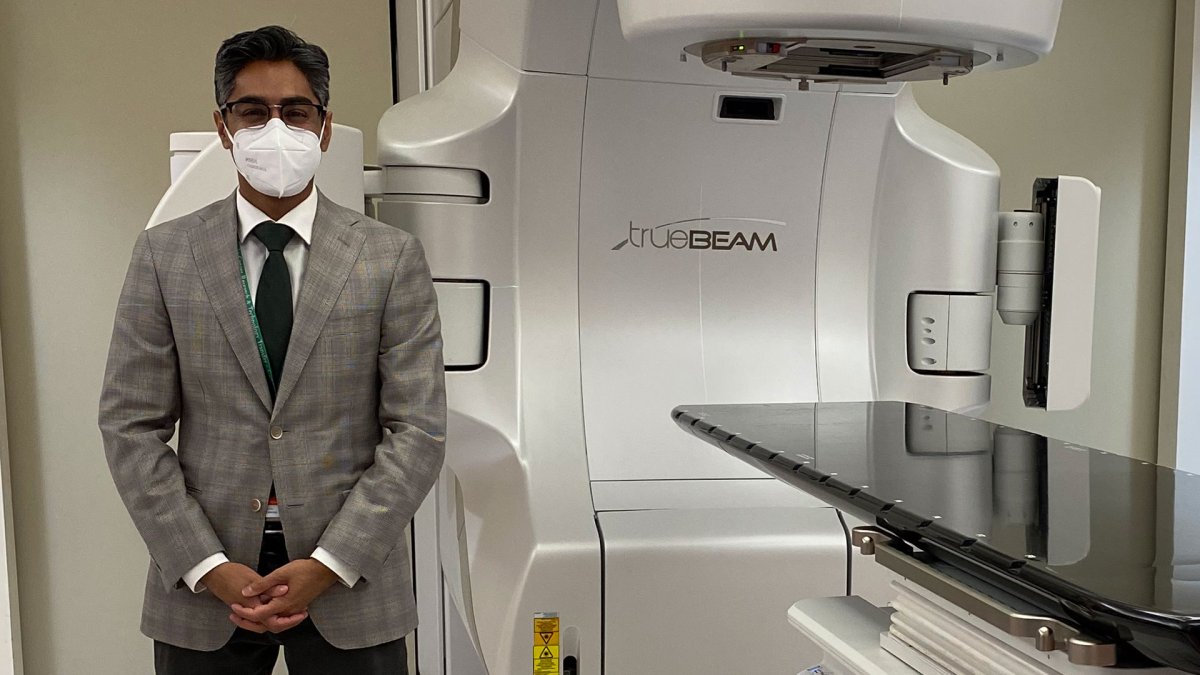A new study involving researchers from the Lawson Health Research Institute in London, Ont., suggests a high dose of radiation could be a treatment option for patients with inoperable kidney cancer.

The study, published in The Lancet Oncology, proposes that a very high, precise dose of stereotactic ablative radiotherapy or “SABR” may be a new treatment option for certain patients.
Lawson was one of 12 participating centres from around the globe with patients recruited from the London Health Science Centre’s London regional cancer program.
“We’ve been a key centre in this international consortium for probably about a decade now,” said Dr. Rohann Correa, a Lawson scientist and radiation oncologist at LHSC.
He said that SABR is “a completely noninvasive treatment where patients need to lie flat, a robotic arm rotates around your body, it doesn’t touch you, it’s about a metre away the whole time, and in anywhere from one to five visits to the cancer centre, we can deliver a therapeutic high dose radiation targeting that kidney tumour.”
Correa added that the treatment depends a lot on technology.
“The targeting, and the precision of radiation delivery, that has taken leaps and bounds in the last several years,” he said. “Early on, in the management of kidney cancer, some couple of decades ago, radiation was considered not really effective for kidney cancer. But if you’re able to deliver it with high precision and high doses that we are seeing now, the results are proving that it is indeed effective.”
SABR limits the impact on the tissue surrounding the tumour and is offered to patients who are unable or unwilling, for various reasons, to have surgical treatment, such as medical issues that prevent them from undergoing a general anesthetic.
The treatment analysis included 190 patients with primary renal cell carcinoma, the most common type of kidney cancer.
Researchers found SABR to be effective and safe with a low rate of cancer recurrence and an acceptable impact on kidney function. The study outlined that by five years after treatment, “kidney function was largely maintained and only 5.5 per cent saw their cancer return in the treated kidney.”
While previous studies on the use of SABR for primary renal cell carcinoma have been encouraging, researchers said that this recent publication represents the “first report of long-term follow-up from a large, international group of patients.”
“This treatment is also being applied in other research contexts and we’re a part of these other studies as well,” Correa said. “It’s also being applied to the metastatic setting where kidney cancer has spread to other parts of the body or if there is still a main kidney tumour present, despite spread to other parts of the body. So, this form of radiation can be used to target other sites as well or other settings.”
While the testing trial is still underway, Correa said that “the best-case scenario is that there is another available treatment option for patients who might otherwise have not had the chance to have their kidney tumours treated definitively.”
“With this form of radiation, we can kind of offer these patients another potentially curative option that they may not otherwise have had, and hopefully down the road, that is something that we’ll be able to use in standard practice,” he said.









Comments